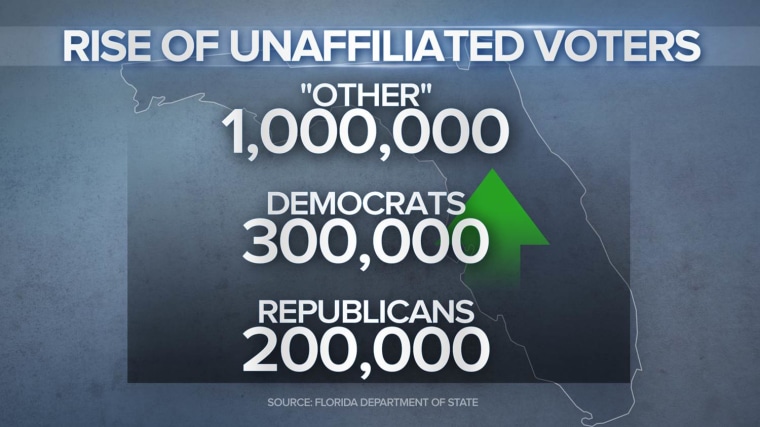Independence Day comes once a year in the United States, but in politics we are witnessing the rise of an “independents' era.” And that unaligned group is reshaping the way we understand the two-party system.
Polling and voter registration numbers from across the country show the number of self-identified independents is growing faster than the number of Democrats or Republicans – and that growth seems likely to continue.
Data from the Pew Research Center shows independents are now the biggest partisan group in the United States. The percentage of people self-identifying as independent was 39% in 2014. The number for Democrats is 32% and for Republicans it is 23%.
Just 10 years ago, 31% of Americans identified as independents, in between Democrats at 33% and Republicans at 29%. And, perhaps more notable, that current 39% represents the highest measure of independents in 75 years, according to Pew.
If you look at voter registrations in states around the country, you can see the growth trend there as well.
In Florida, always a crucial battleground state, the number of people registered as “other” has grown by more than 1 million since 2005 – far outstripping the growth among Democrats, about 300,000, or Republicans, about 200,000.

In Colorado, another important swing state, “unaffiliated” registrations have grown by about 280,000 since 2005 to become the largest group of voters in the state. That growth is double the increase in Democratic registrations over that period, about 139,000, and far greater than the growth in Republican registrations, which have only climbed by about 1,000.
In North Carolina, the number of “unaffiliated” registered voters has grown by about 700,000 since 2005. Registered Democrats have grown by about 100,000 in that period and Republicans are flat. In New Hampshire and Iowa, two big early primary states, “undeclared” and “no party” voters are the biggest groups.
Furthermore, when you look at the trends underlying those figures, there is no reason to expect this rise to slow down to reverse itself. Pew Research Center polling data shows that as you go down through age groups, the percentage who self-identify as “independent” grows.
Only 29% of those in the Silent Generation self-identified as “independent” in 2014, according to Pew. But the number was 35% among Baby Boomers and 40% among those in Generation X. Among Millennials the figure is enormous, 48%.
In other words the trend is crystal clear, but it's less certain is what it means.
Just because one self-identifies with a political party, or doesn’t, may not mean a lot in a particular election. After all, recent campaigns have shown that however people self-identify themselves, the country is pretty evenly divided at election time. And the stances that individual candidates hold on issues or a candidate’s personal appeal may be larger factors than how one registers or what one tells a pollster.
And don’t look for the two-party system to come to an end any time soon. When you ask those self-identifying voters which party they lean toward, the numbers move sharply in the Pew data for all age groups. The Silent Generation leans Republican (47% GOP versus 41% Democratic) and Millennials break heavily Democratic (51% Democrat versus 35% Republican).
But the rise in “independent” voters does suggest the parties have less hold over their faithful than they once did and one upshot could be that American politics is more susceptible to sudden swings. American voters still wear blue and red jerseys at election time, but these numbers suggest they are less comfortable in them than they once were – and they may be are more willing to swap teams.